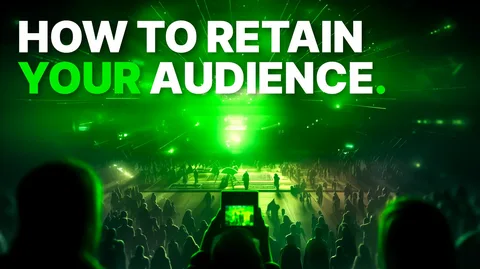| SEO | |
| Meta title | How to Design a Corporate Stage That Keeps Your Audience Engaged? |
| Meta desc. | To design a corporate stage, ensure alignment with the event objectives, visibility, lighting, flexibility, and functionality. Read more. |
A well-designed stage sets the tone for any corporate event, supporting effective messaging and sustained audience engagement. The layout should reflect the event’s purpose while balancing visuals and branding. Select lighting that highlights key moments to prioritize visibility and connection with the audience. A flexible design allows seamless transitions, particularly between speakers or presentation formats.
Using technology for real-time participation also improves engagement, while an impactful visual background keeps attention on the topic. Smart branding and social media-friendly touches can carry the event beyond the venue. For best results, consult a professional stage rental company to design a setup that captures attention and delivers results.
Tips for Designing a Corporate Stage
Below are some tips for designing corporate stages:
1. Consider Your Event Objectives
Corporate events can be of diverse types, and so should your stage. Before you start, you need to identify your event type:
- Executive keynotes require a clean, professional appeal with a strong visual focus.
- Product launches use dynamic lighting, dramatic reveals, and screens.
- Sales presentations demand high-quality graphics and dramatic energy transitions.
- The best employee recognition events have warm lighting, celebratory graphics, and an inviting stage setup.
The people, layout, lighting, and branding should all align with the event’s central theme and mood.
2. Emphasize Visibility and Connectivity
Every attendee, from the front row to the back, should feel involved at a corporate event. To ensure maximum visibility:
- Raise the stage to suit the room size and audience density.
- Huge LED walls or projection screens to view the speakers, decks, or branding.
- No excessive props or decor blocking views.
- Ensure clear sightlines for panel discussions or live demos.
When attendees can see and hear effectively, they remain engaged longer.
3. Flexible and Functional Design
Anything from solo keynotes to team panels and live Q&As is hosted on corporate stages. Plan for flexibility by following these tips:
- Create using modular stage elements (movable furniture, risers, or podiums).
- Design to ensure multiple entry and exit points.
- Add side areas to allow interactive product demos or video features.
- Leave room for on-stage chats, awards, and photo ops.
4. Control Energy and Focus with Lighting
Lighting plays a major role in guiding attention and shaping the audience’s mood. Use smart lighting strategies such as:
- Lighting for speakers and presenters.
- A simple accent lighting for transitions or award unveilings.
- Subtle motion lighting that allows for visual interest without distraction.
- The right lighting setup can fill the presentation with high-energy vibes.
5. Add in Brand Identity
Your company’s corporate stage should reflect your values and vision, not just your logo. Creative branding ideas:
- Use LED screens to showcase rotating animated logos and mission statements.
- High core values, taglines, and phrases
- Use subtle branding throughout the backdrop, podium, and transitions.
- Keep it classy so your brand presence feels strategic and not spammy.
6. Use Technology to Monitor Audience Engagement
Modern corporate events thrive on interactivity as much as learning. Add engagement with:
- Live polling and real-time Q&As are displayed on large screens.
- Social media feeds or shoutouts from co-workers during breaks.
- Touchscreens for voting or breakout activities.
- Use technology to stay focused, engaged, and excited to participate.
7. Add Flow Through Transitions
Attendees quickly notice when an event loses momentum. Ensure smooth transitions by:
- Using video openers and walk-on music between sessions.
- Bringing in an experienced event host to facilitate the flow.
- Practicing with every presenter and AV personnel to synchronize timing.
8. Create a Background That Serves the Message
Forget old-school drapes because corporate events have shifted towards visually heavy backdrops that lend themselves to the brand and the content. Consider:
- LED video walls with motion graphics, speaker intros, and product visuals.
- Contemporary scenic panels with dimensional design.
- Staging takes a minimalist approach that highlights people and ideas.
- The backdrop should support and not distract from what’s happening on stage.
9. Think Photo-Worthy Design
Corporate events are also marketing opportunities. An impressive stage convinces you to share and remind people of your brand. To boost content sharing:
- Use event hashtags and handles in your screen graphics.
- Flatter speakers and photos with smart lighting design.
- Create a branded space for group shots or media interviews.
10. Practice and Refine for Perfection
No matter how beautiful the stage, it is useless without preparation. Before the big day:
- Rehearse audio, lighting, and screens from various angles.
- Explain the stage layout and transitions to the presenters.
- A complete dress rehearsal with the full timing of cues and plans for backup in case of failure.
Conclusion:
A corporate stage is more than just aesthetics; it’s a strategy. First, align the setup with your event’s goals and ensure visibility for everyone in the room to build a connection. Smart lighting decisions direct attention, and smart layouts facilitate movement. Use a visually strong backup that reinforces your message, and incorporate interactive technology to elevate the experience further.
Promote branding that reflects, along with social-media-friendly elements, to leave an unforgettable impression. When all the elements combine, your stage becomes more than just a platform; it becomes an element of your message. For the best corporate event stages, contact a reputable stage rental company.







